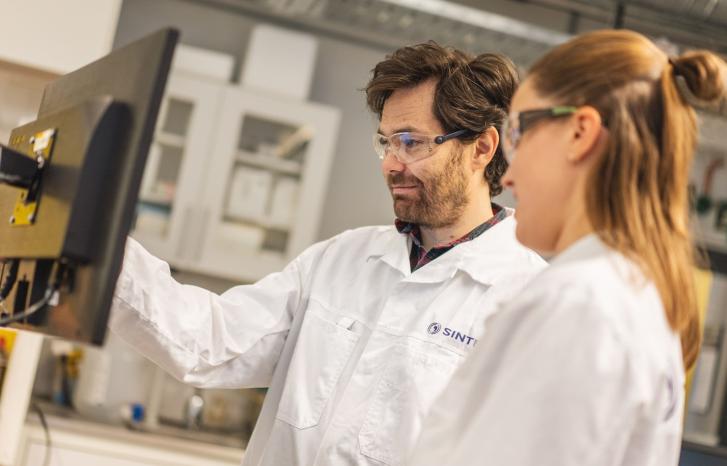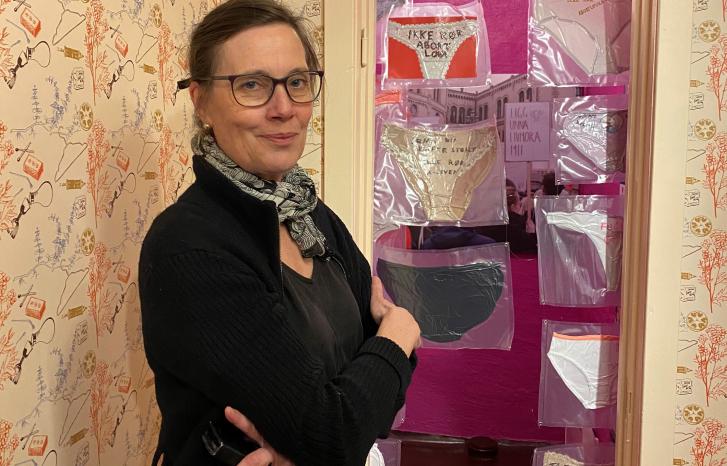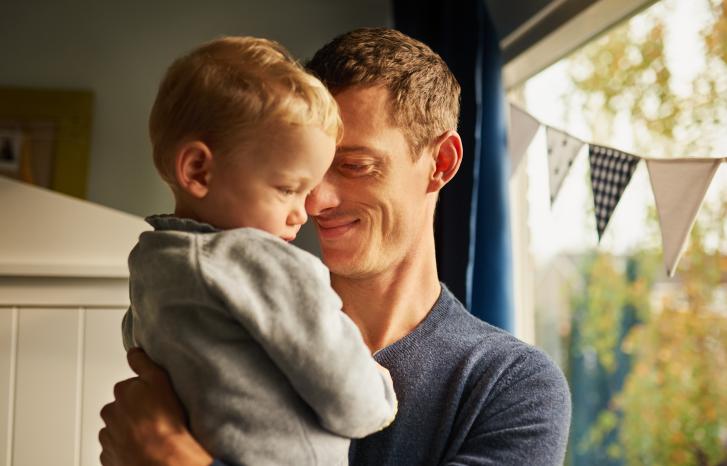“Perhaps my most important finding is that men go through a process that’s not so different from the women’s,” says Hege Follestad, doctoral research fellow at Nord University.
Follestad has written the book chapter ‘Manøvrering mellom maskuliniteter – en studie av menns erfaringer ved uplanlagt graviditet’ (Navigating masculinities – a study of men’s experiences with unplanned pregnancy). The study is based on individual interviews with seven men between the ages of 22 and 51.
“The men find themselves in a life crisis when the woman they are or have been with becomes pregnant unexpectedly and considers abortion,” she says.
“Like women, they face uncertainty and fear when confronted with a life-changing decision.”
Hege Sofie Ledang Follestad is a nurse and doctoral research fellow at Nord University.
In her doctoral dissertation, she explores men’s experiences and needs when facing an unplanned pregnancy, as well as the perspectives and reflections of healthcare and social workers who guide men in such situations.
The chapter ‘Manøvrering mellom maskuliniteter – en studie av menns erfaringer ved uplanlagt graviditet’ (Navigating masculinities – a study of men’s experiences with unplanned pregnancy) is included in the book På sporet av kjønn (On the trail of gender) from 2025, edited by Astri Dankerstsen and Ann-Torill Tørrisplass.
An existential choice
Follestad, a psychiatric nurse, has counselled women and couples considering abortion. This experience became a key motivation for her doctoral research.
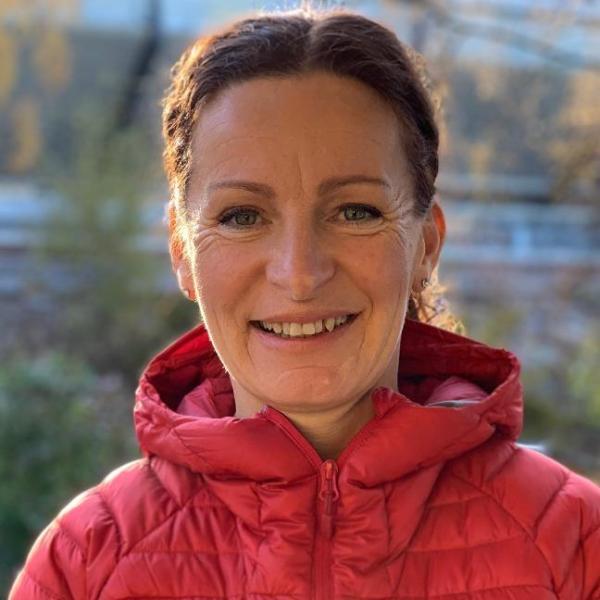
“Choosing whether to have an abortion is both an existential and ethical decision, and many of the couples I worked with were often in disagreement,” she explains.
“While the final decision rests with the woman, it’s still essential to acknowledge the man’s perspective.”
Follestad became increasingly interested in the man’s perspective but discovered that there was little literature on the subject. That motivated her to research the topic.
“I realised that this was a topic that needed to be studied,” she says.
“The male perspective on abortion can feel like a sensitive, even untouchable subject. But recognising men’s experiences doesn’t have to conflict with protecting woman’s rights.”
Loss of control
IIn her analysis, Follestad drew on critical masculinity theory, which explores how men ‘perform masculinities.’
“The men participated in the study while the woman was between six and nine weeks pregnant. They were right in the middle of her decision process when I spoke to them,” she says.
Follestad explains that all of them felt a loss of control.
“They were in the middle of a major life decision, but without the power to decide,” she elaborates.
“The traditional hegemonic masculinity is turned upside down: The woman has autonomy over her body, and the men’s position becomes subordinate. This clashed with traditional expectations of men as strong, decisive, and responsible for providing for the family.”
At the same time, the man’s role as a caregiver has fortunately been expanded, Follestad emphasises.
“In Norway today, men are actively involved in caring for their children; they attend prenatal checkups, are present at the birth, and take their share of parental leave.”
“All of the men stressed the importance of staying in the situation and ‘not running away.’”
Between powerlessness and decisiveness
Follestad found that the men navigated between different forms of masculinity, shifting between powerlessness and decisiveness.
“All of the men stressed the importance of staying in the situation and ‘not running away.’ Alongside the expectations they placed on themselves, they were also concerned with what society expected of them,” she explains.
“Even when they disagreed with the woman’s decision, they stepped up. Many felt helpless and frustrated, yet they still focused on supporting the women,” she says.
Although all the men felt a loss of control, they also took responsibility in various ways.
“They took charge where they could, for instance by booking doctor’s appointments or exploring financial options.”
Is there really no space to be honest in such a situation?
Follestad was impressed by the men’s ability to mobilise in such a difficult situation.
“Lacking control over such an important decision in their own lives gave them a sense of losing their footing. Still, the men I interviewed managed to act beyond their own interests: If they didn’t want to become fathers, that shouldn’t affect the child or the woman,” she says.
Most of the men were included by the women in the decision-making process. But some of those who opposed having the child were excluded, Follestad explains.
“Likely because the woman feared being influenced to choose abortion if that wasn’t what she wanted,” she says.
“The men experienced this as a dilemma. They asked themselves: Is there really no space to be honest in such a situation? Am I putting pressure on her by saying I don’t want the child?”
"They asked themselves: Is there really no space to be honest in such a situation? Am I putting pressure on her by saying I don’t want the child?"
“Abortion is still taboo”
“We need more research into abortion experiences, both from men’s and women’s perspectives. When it comes to men’s experiences, I’m not aware of any studies at all,” says Eva Sommerseth.
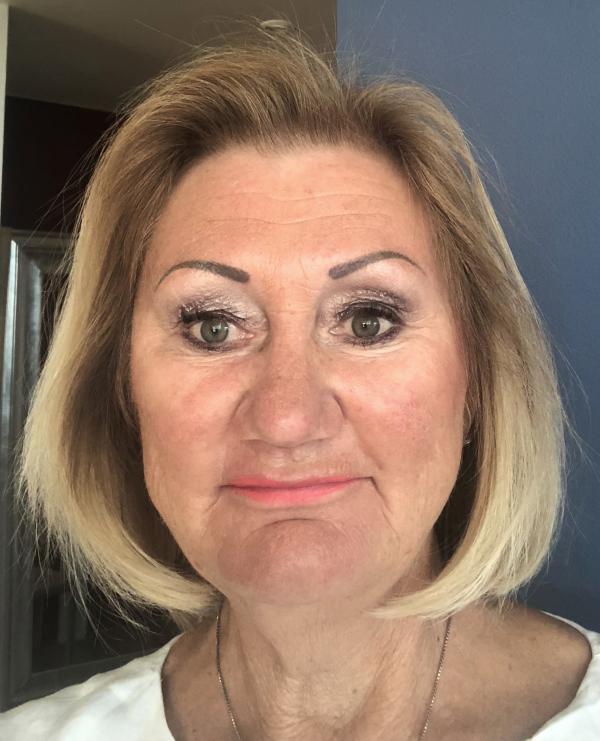
Sommerseth is a midwife and associate professor emerita at the University of South-Eastern Norway. She has researched women’s experiences of abortion, most recently in a study on medical abortion.
“A pregnancy involves two parties, whether it ends in abortion or in birth,” she stresses.
“That’s why it’s important to expand our knowledge of men’s experiences as well, even though the final decision lies with the woman.”
From her interviews with women who have had abortions, Sommerseth found that many live with guilt and shame for years afterward.
“Abortion is still a taboo subject, and that affects men too. Today, sex, contraception, and pregnancy are openly discussed, but abortion is still not talked about,” she says.
“Women who had abortions twenty years ago can still recount the event down to the smallest detail. This is typical of trauma, and research shows that what helps with trauma is talking about it.”
A diverse group
The participants in Follestad’s study formed a diverse group. Some were students, others were working. Only one already had children. All were recruited through a counselling centre for pregnant women.
“The men were in a vulnerable situation, so it was important to create trust and a safe space for conversation. They were also offered the chance to speak with healthcare workers if they needed to,” Follestad explains.
Age and life circumstances strongly shaped how they coped and navigated their situation. Most of the men wanted the woman would have an abortion, though one man wanted to keep the child, Follestad notes.
“Couples often seek counselling because they disagree. But some also come simply because the pregnancy was unplanned,” she says.
“A couple of the men were students, one had health problems, and another already had children. Work and finances had a major influence on how they saw the situation and imagined a potential future as fathers.”
Follestad emphasises that a man wanting something different than the woman doesn’t make him a ‘bad guy.’
“I wanted the men to articulate what they thought and felt in the situation. In doing so, I hope other men in similar situations can see that they’re not alone – that feeling ambivalence is normal.”
How it affects the relationship
Follestad makes it clear that the study’s findings cannot be considered representative, given the small sample size.
“On top of that, the participants were recruited from a group already seeking counselling – men who wanted to talk about their situation and share their perspectives,” she says.
“I haven’t spoken with the men who don’t reach out for support. The silent ones, and those unable to participate in such a setting, aren’t included.”
For Follestad, the study’s value lies in giving men a voice: Both for others facing similar circumstances and for counsellors working with them.
“This is a largely overlooked topic. The men I interviewed wanted to read about other men’s experiences but found no literature on it.”
Follestad is also concerned with how the decision – whether to have an abortion or not – affects the relationship afterwar, another area where more research is needed.
“Supporting both the man and the woman in a way that helps them come through the experience as positively as possible is preventive care for both,” she says.
“It’s not just about the decision itself. It’s much more complex. Being in this situation means facing a life crisis. At the same time, it’s a universal experience – nearly half of all pregnancies are unplanned. But that doesn’t mean they’re all unwanted.”

